Capital:
Nairobi
Currency
Kenyan shilling
Best time to visit:
The best weather is in January and February, a period of dry heat. Equally pleasant, but cooler (except on the coast) are the months from June to September. The wildebeest migration in the Masai Mara takes place between July and September. The rains are particularly intense from March to May and less abundant from October to December.
In a word:
Hakuna matata (no worries)
Vaccines
Malaria is widespread; antimalarial prophylaxis is recommended in areas below 1500 meters above sea level and in particular along the coast.
Warnings:
- The stop in Nairobi is often unavoidable but there are some neighborhoods that are best avoided.
- There are areas of the country that are unsafe. Follow the travel advice of the Ministry of Foreign Affairs.
- In almost all the Parks, children are only allowed from 7 years of age.
At the table:
The kitchen offers beef or lamb dishes (often cooked on the grill, called nyama choma), accompanied by beans, potatoes, plantains and other carbohydrates. Fruit is featured on every menu: mango, papaya, pineapple, passion fruit, bananas and guava.
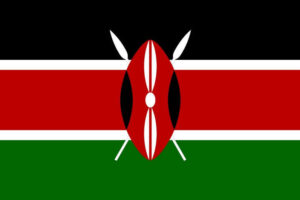
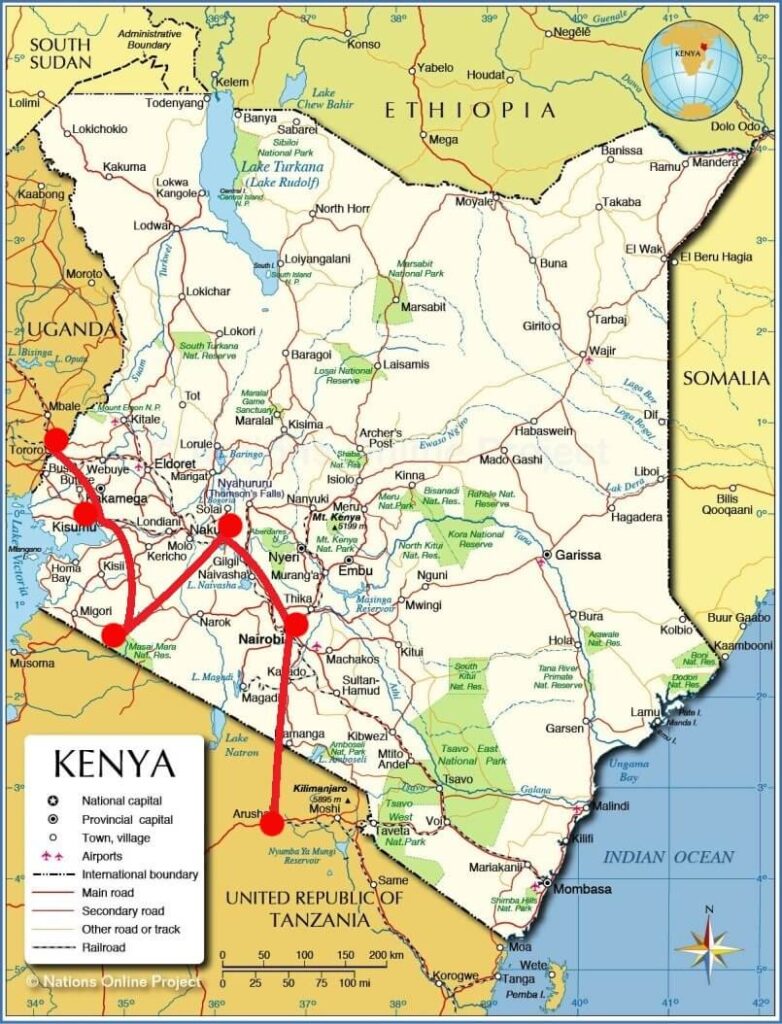
Essential experiences:
Meet the Masai tribes and be enchanted to admire their nomadic life; Spend a few days in the majestic Masai Mara NP; Get lost in the chaos of busy Nairobi
In this great adventure we rented an old military 4 × 4 truck, modified for the transport, spartan, of adventurers in Nairobi, Kenya and almost a month later, we returned it to the same city after covering more than 4000 km around Lake Victoria.
We will sleep almost every night in tents in the most legendary national parks of East Africa, we will cook using our camping kitchen. We will come into contact with the Masai culture of Kenya and Tanzania; we will go into the "impenetrable" forest of Bwindi National Park, Uganda, discovering the latest silverback gorillas; we will be moved in the Kigali Genocide Museum, Rwanda until we plunge back into the life of the African savannah with our clumsy truck to parks such as Serengeti or Ngorongoro, Tanzania…
Of course this does not pretend to be a travel guide but simply the story of a great adventure in Africa!
Here is the part dedicated to the magnificent Kenya!
Our suggested itinerary (10 days) | |
two days: | Nairobi |
two days: | Nakuru NP |
three days: | Masai Mara NP |
two days: | Kisumu |
| one day: | entry overland in Uganda or transfer to Nairobi and flight to major African cities and beyond |
We land in Nairobi in the middle of the night and, after completing the various customs formalities, we take possession of our 4 × 4 truck headed straight for Nakumatt, the large supermarket in Nairobi, where we fill our galley with what we will need for all the next month of safari!
Nairobi welcomes us with its chaos, its large buildings, the disorder typical of large African cities and its marabou that dominate its polluted sky and populate the skeletal trees with great fruit.
The transfer to Nakuru National Park allows us to breathe some real Africa.
We are amazed at the greatness of the Rift Valley ...
We proceed along a gray asphalt tongue meeting occasionally baboon families, sitting on the red earth, who observe the traffic indifferently ..
In the meantime, we go up to 2500 meters to reach our first camp: Kembu Campsite.
The sun shines high even if it is cool and we set up our tents early forming our first camp!
The equipped truck is an excellent way to approach animals with respect and admire them closely.
Here are the first baboons, then the wildebeests, buffaloes, gazelles ... it is a crescendo of exceptional encounters and emotions.
In the distance, a leopard that elegantly descends from a tree, a small group of young lions relaxing under an acacia, zebras trotting calmly, wildebeests grazing the sparse grass together with clumsy warthogs, some Thomson's gazelles peer at us curiously, some buffalos walk tired aimlessly, an impala runs scared: we are shyly entering their world!
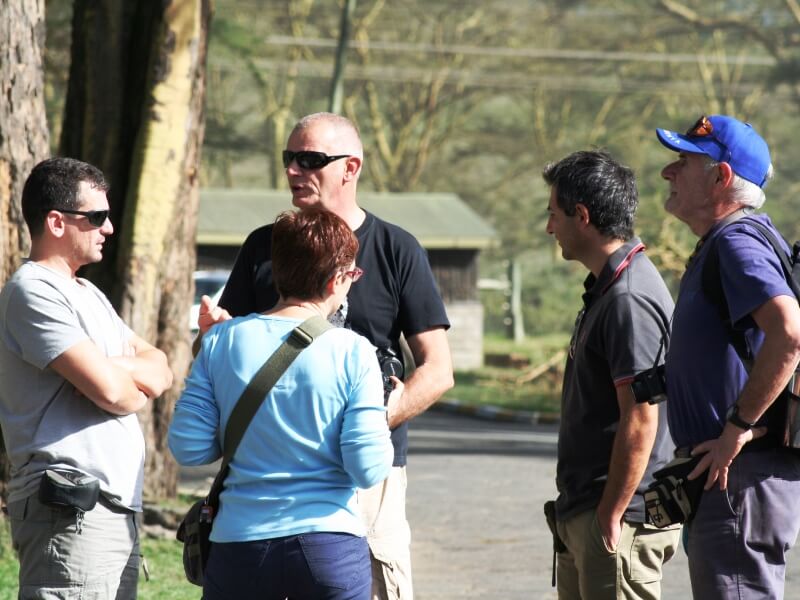
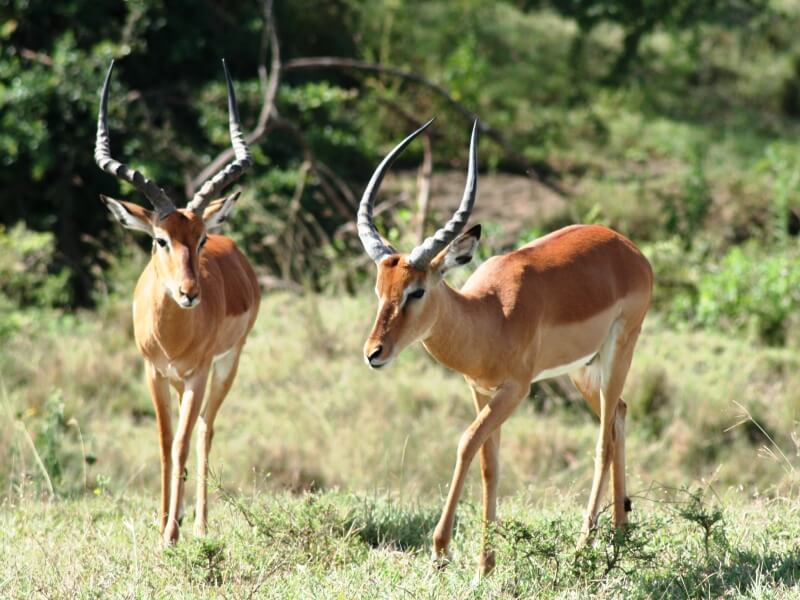
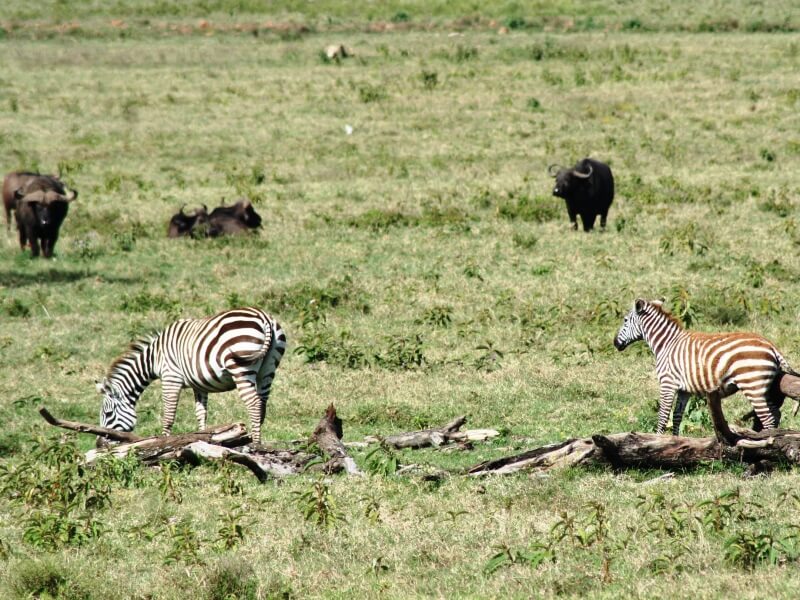
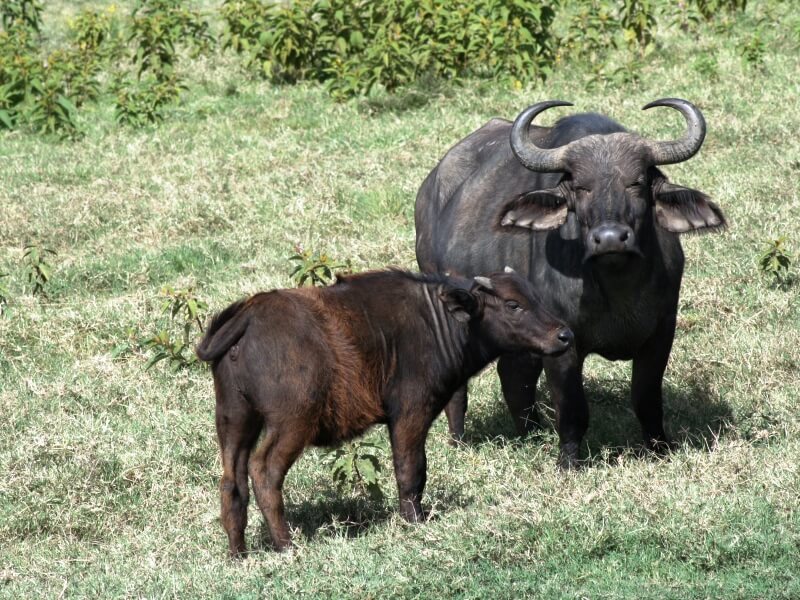

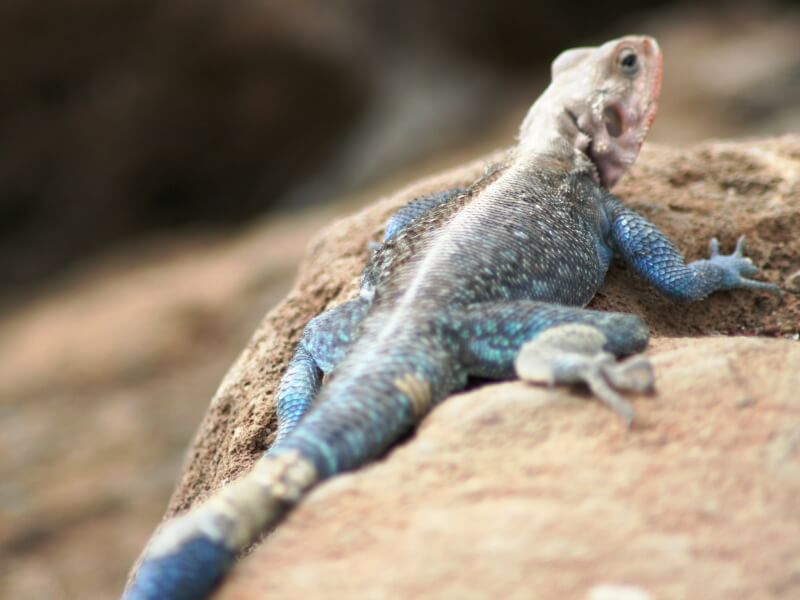
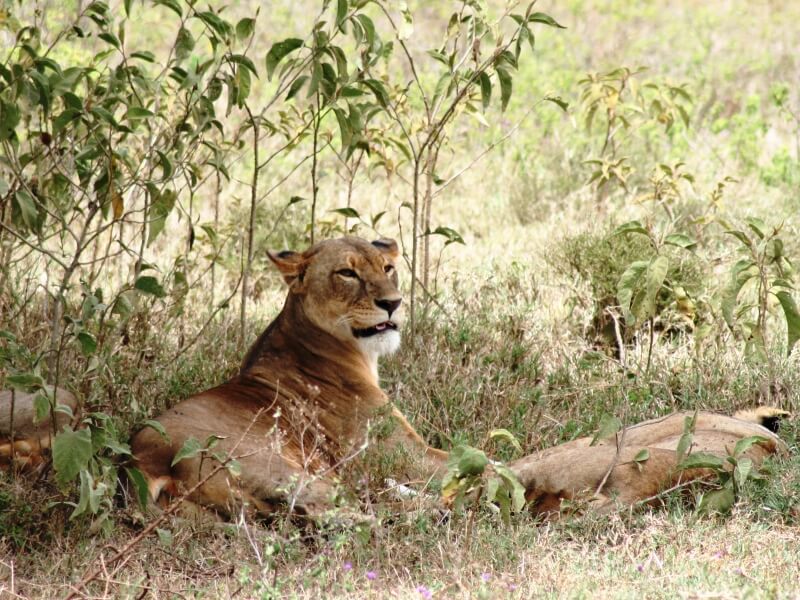
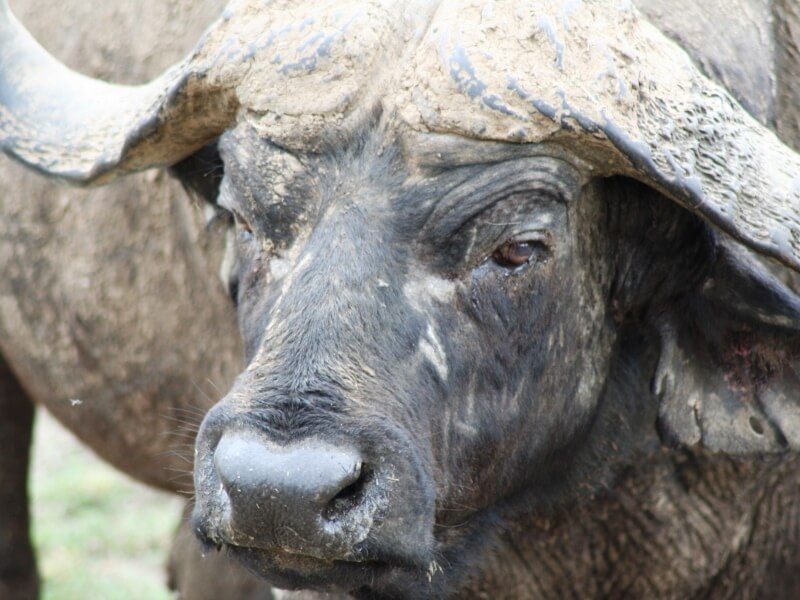
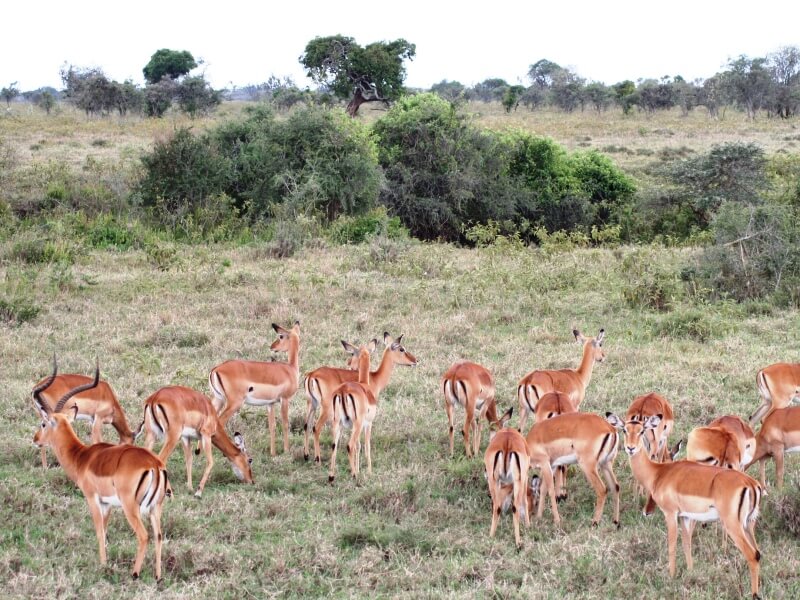
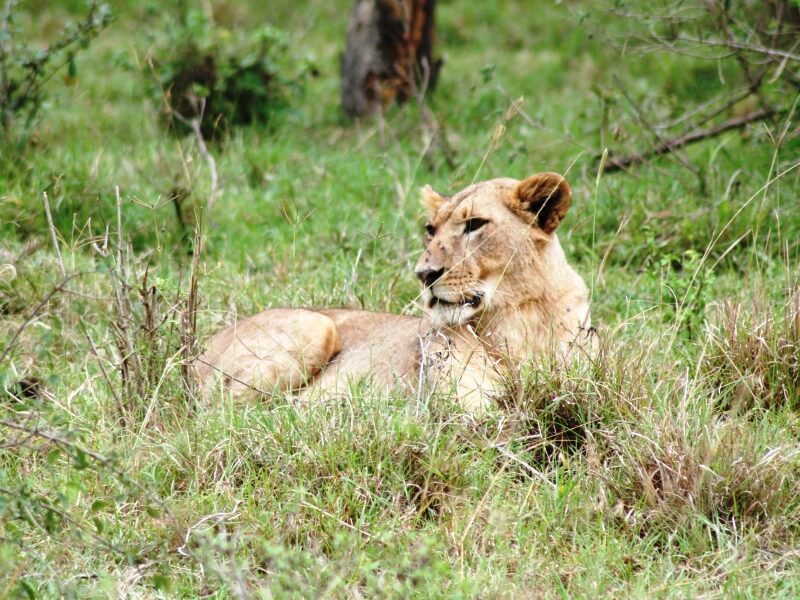
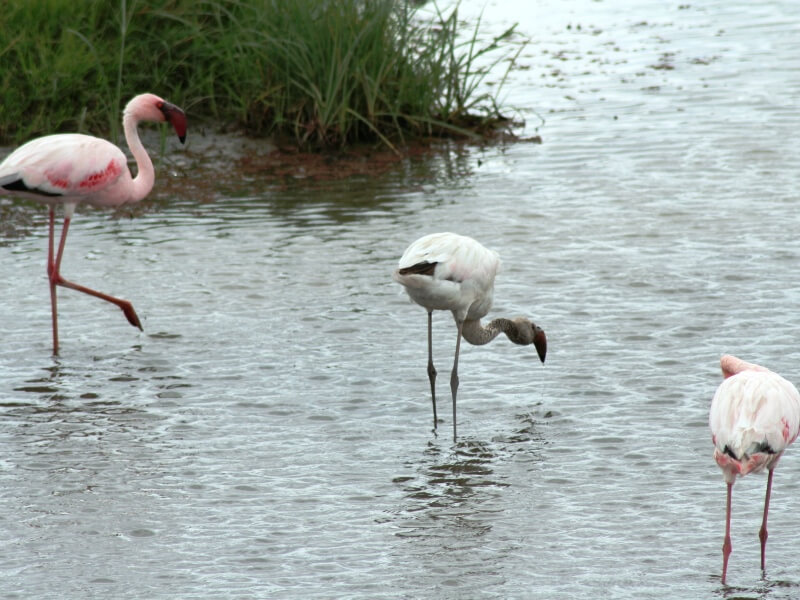
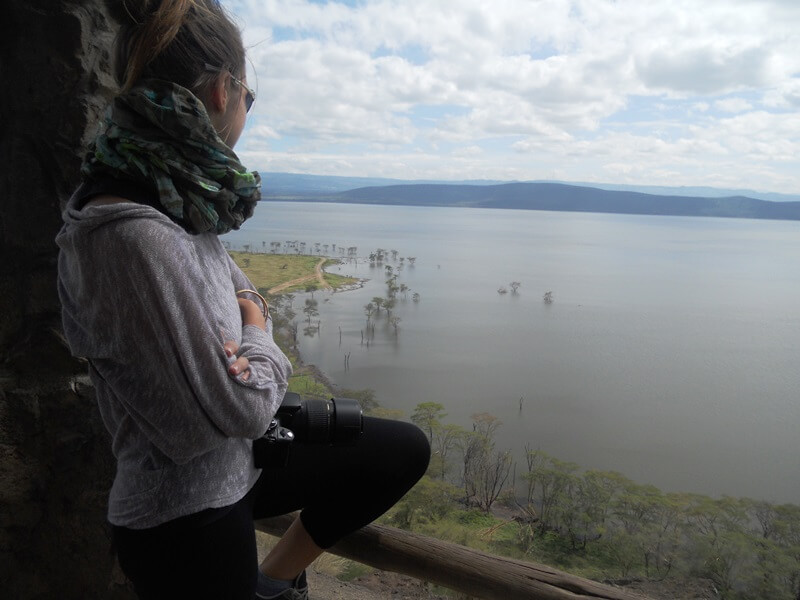
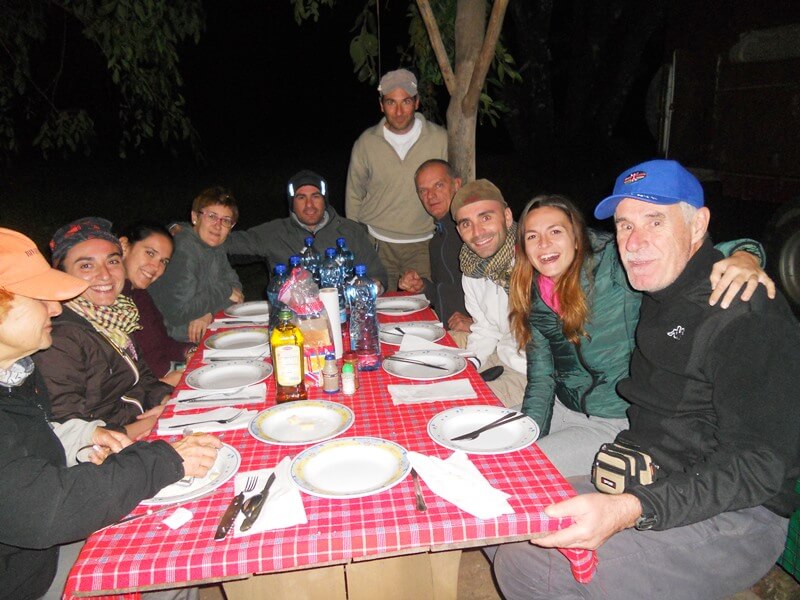
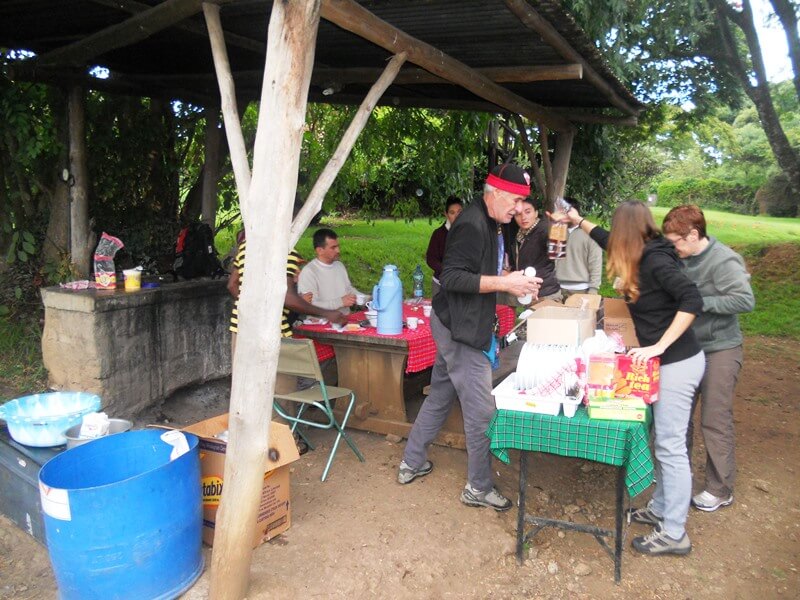
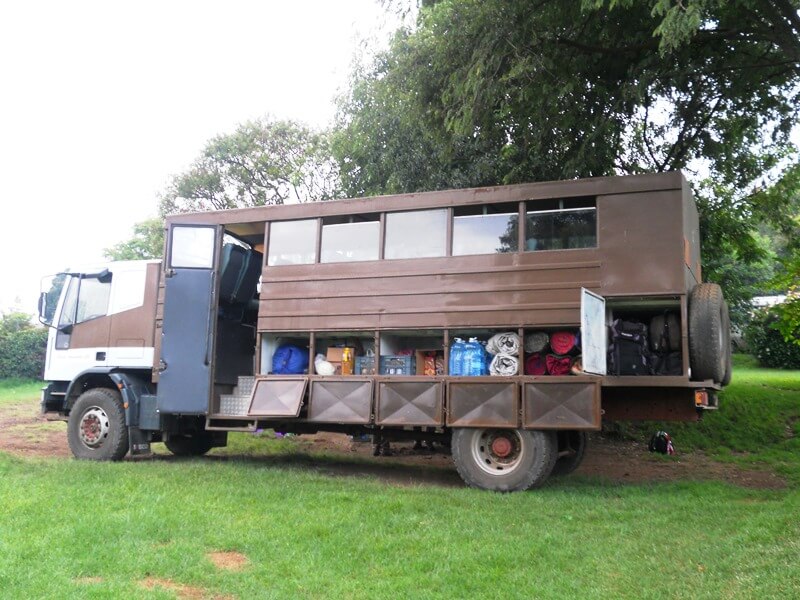
We leave early in the direction of Narok.
We enter the Masai kingdom.
We get tangled up in a tough business when we decide to buy a piece of ice for our cool box ...
We follow Hernest and Ali through a thousand narrow and crowded streets of the local market; often we come across old Masai whom we admire with a kind of awe; they wear bright red costumes, many decorations made of multicolored beads on the neck, wrists, ankles and ears with large holes as well as the inevitable multipurpose stick in the hands.
Shortly before entering the Masai Mara national park we stop to visit a Masai village after negotiating with the tribal chief.
They welcome us with a series of dances and songs up to the classic dance of the jumps. They tell us about their nomadic life, show us their daily lives, their straw huts and explain how they light the fire using only small pieces of wood.
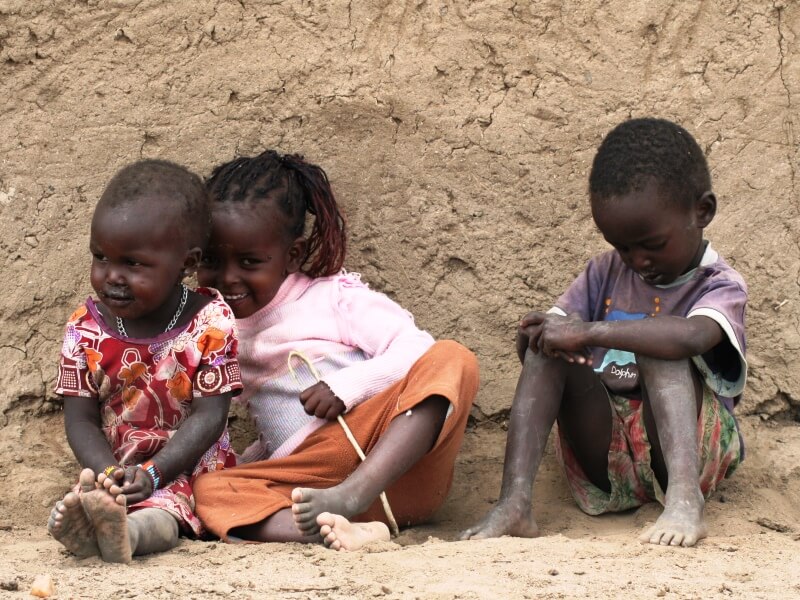
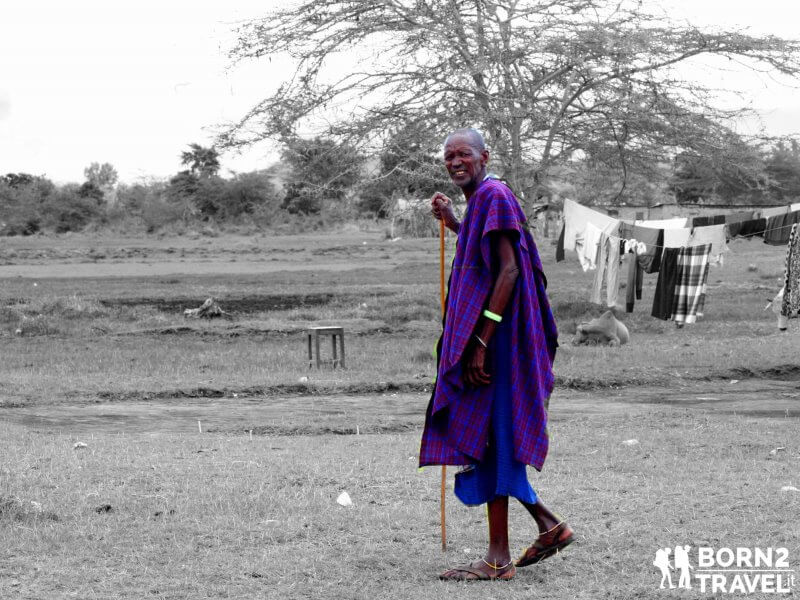
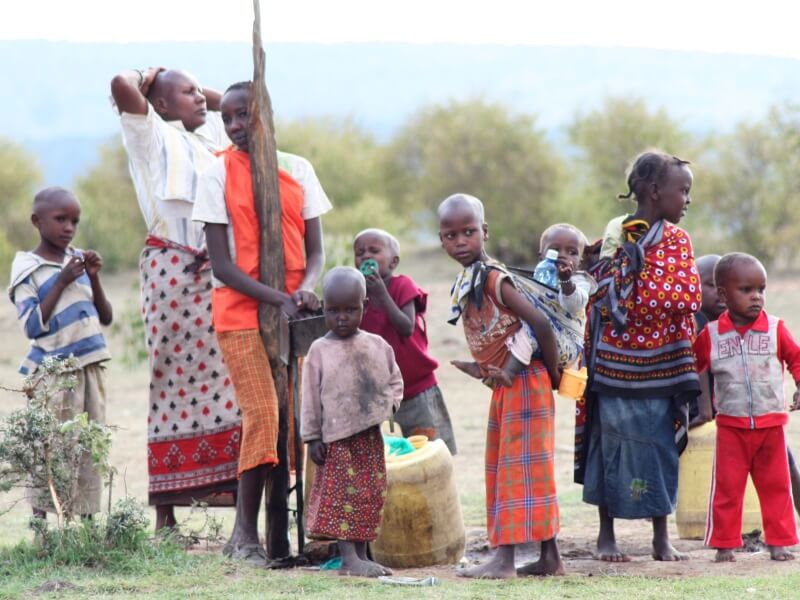
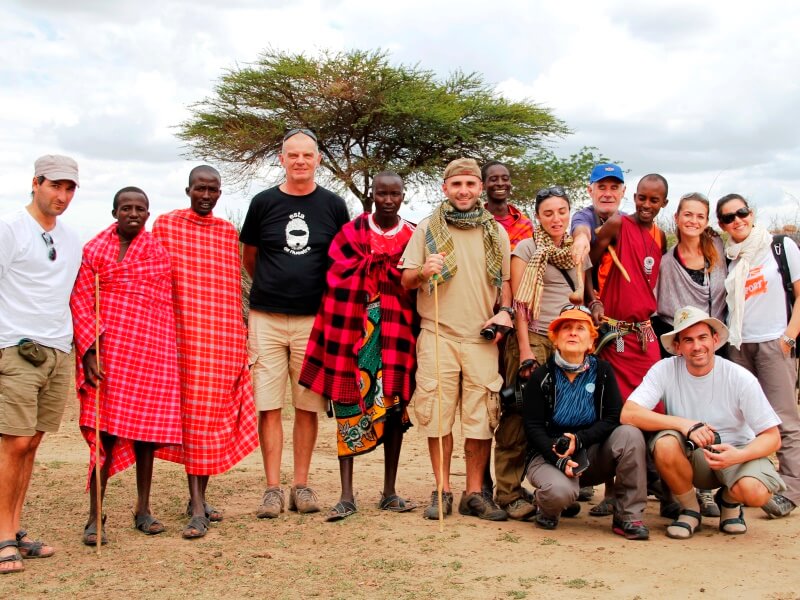
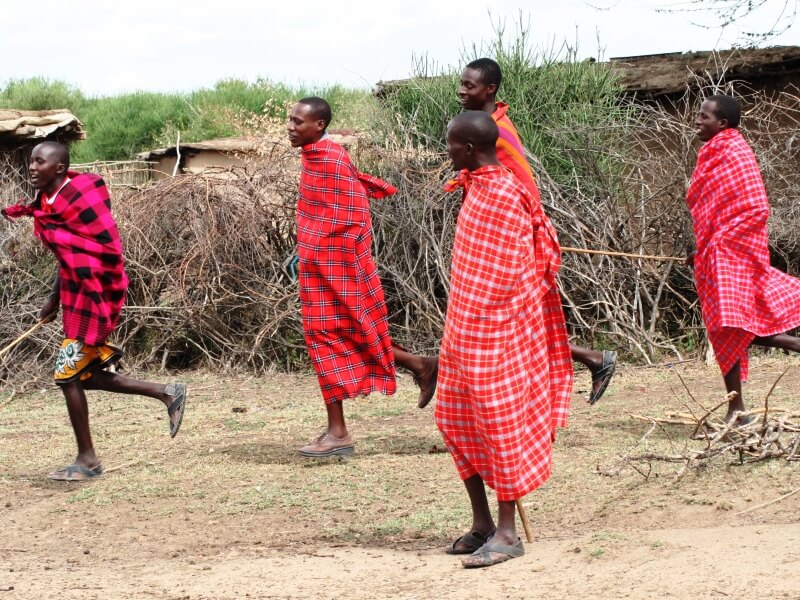
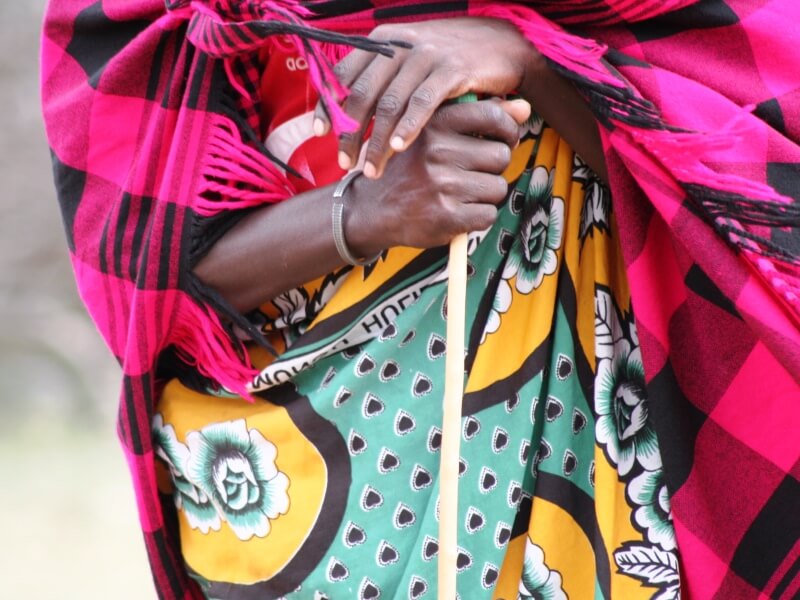
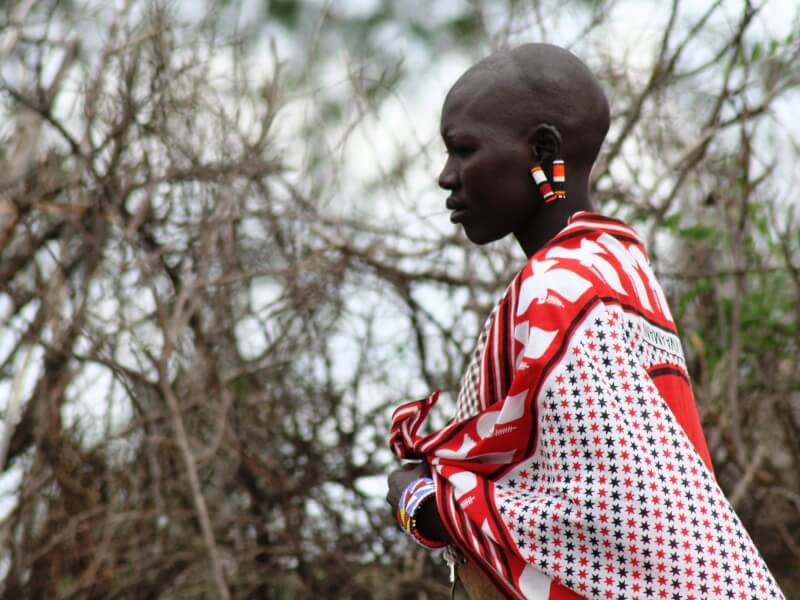
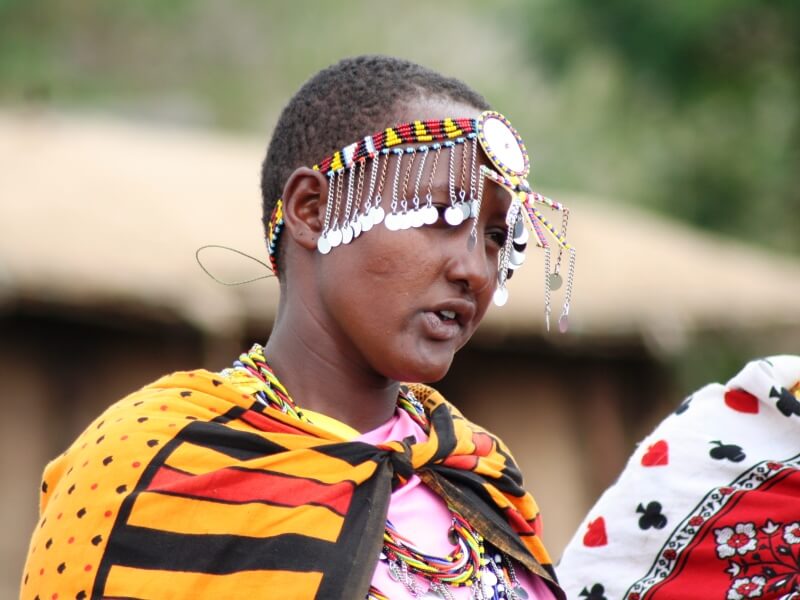
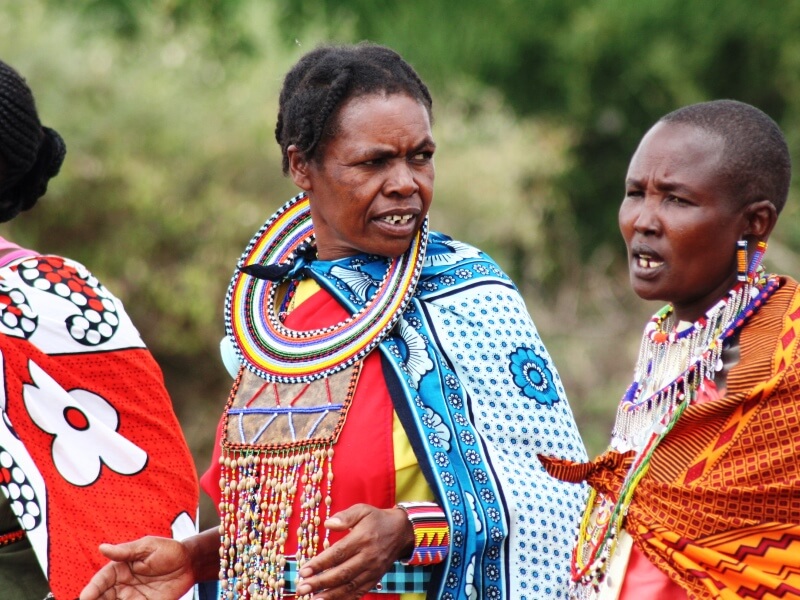
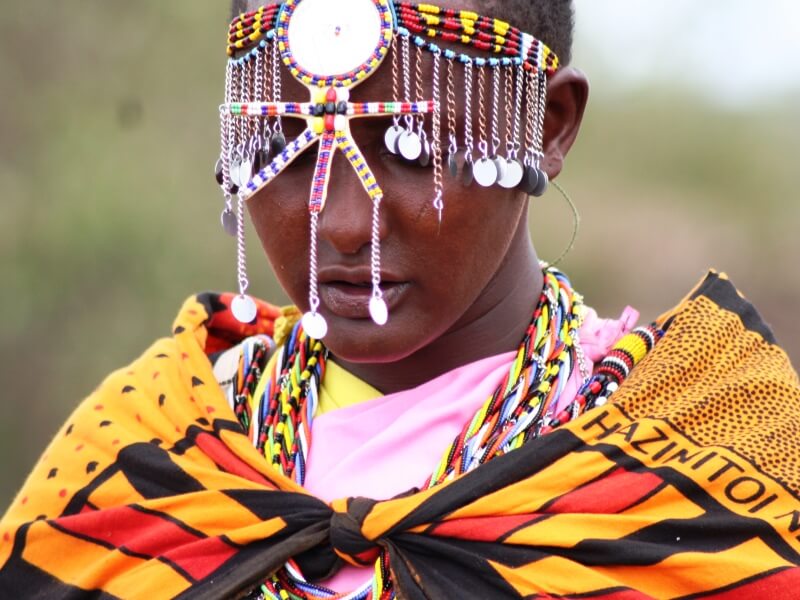
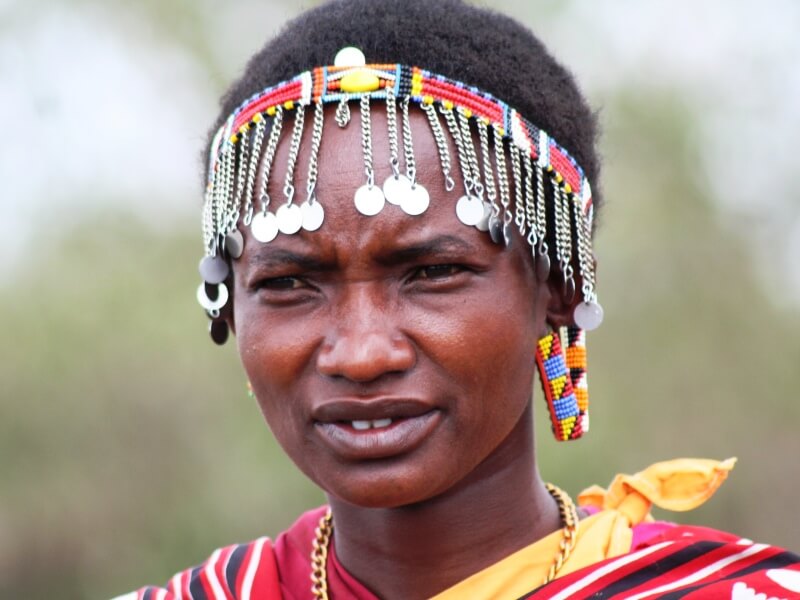
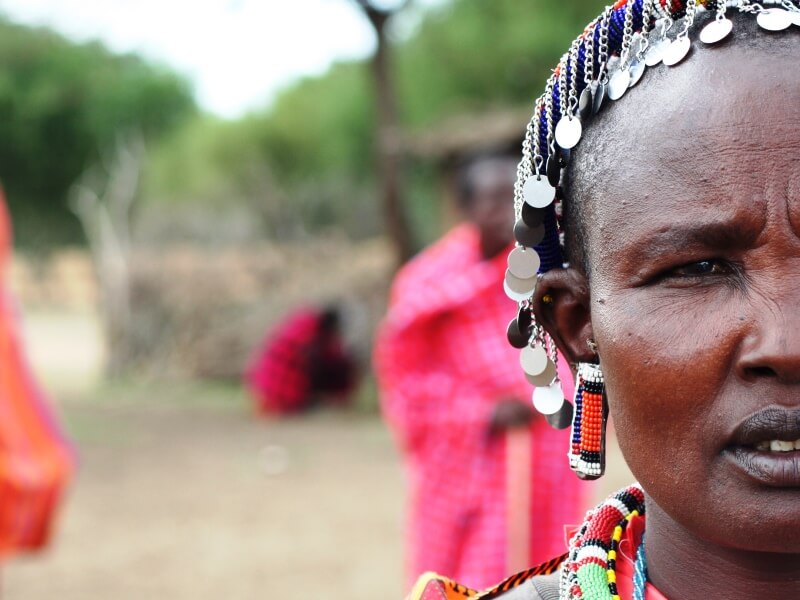
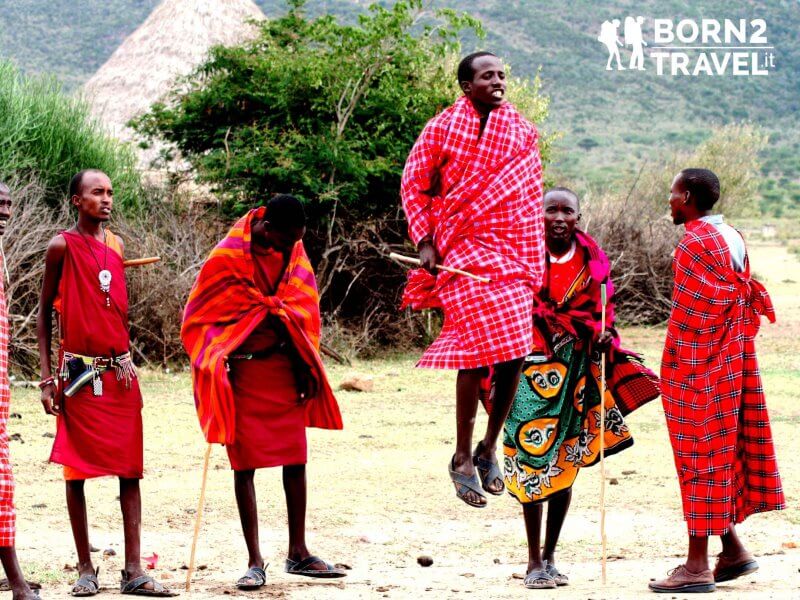
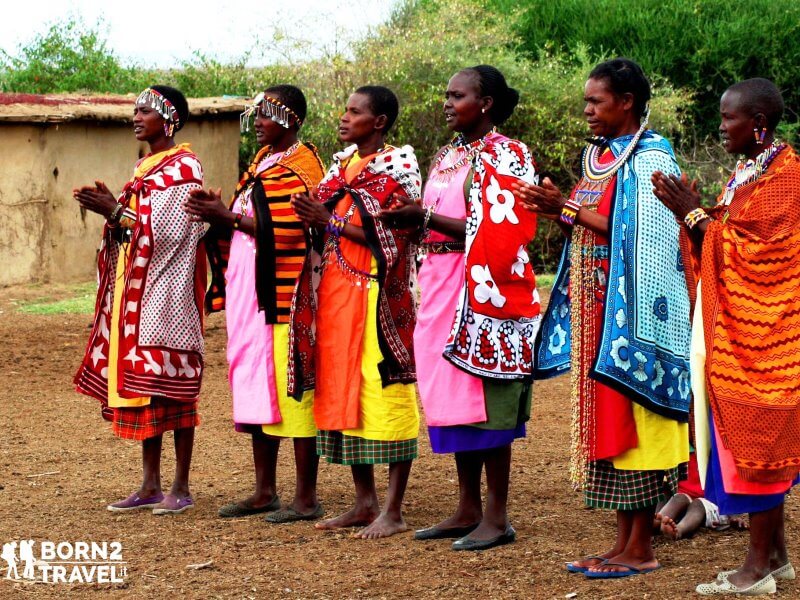
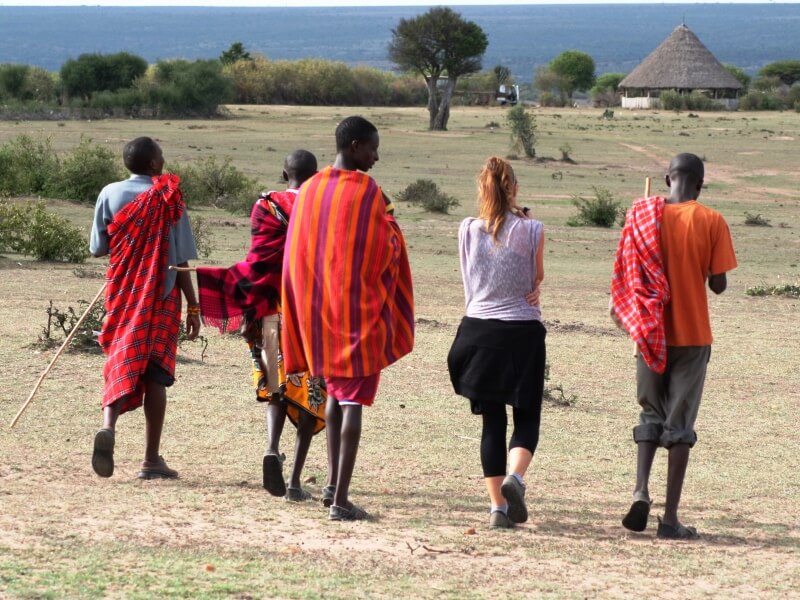
At dawn we cross the gate of the Masai Mara national park. Another exciting safari starts!
We meet many animals and every time we enchant ourselves to observe them, to imagine their wild life, to analyze and study every single detail or movement; we get lost you can look across the black stripes of zebras, all different, or yellow-brown spots of the placid and funny giraffes.
Herds of elephants walk bored, others graze the grass, sometimes tearing whole bushes with a strong trunk while a little one trots trying to understand how to use the small protuberance ...
Some ostriches raise their long, bare necks to look at you; a hyena stretches in the shade of a large bush until the majestic leopard descends imperiously from an acacia tree.
Dozens of carcasses or old wildebeest skeletons scattered everywhere reminded us that this was an area of great hunting and threatening predators ... the chain of life!
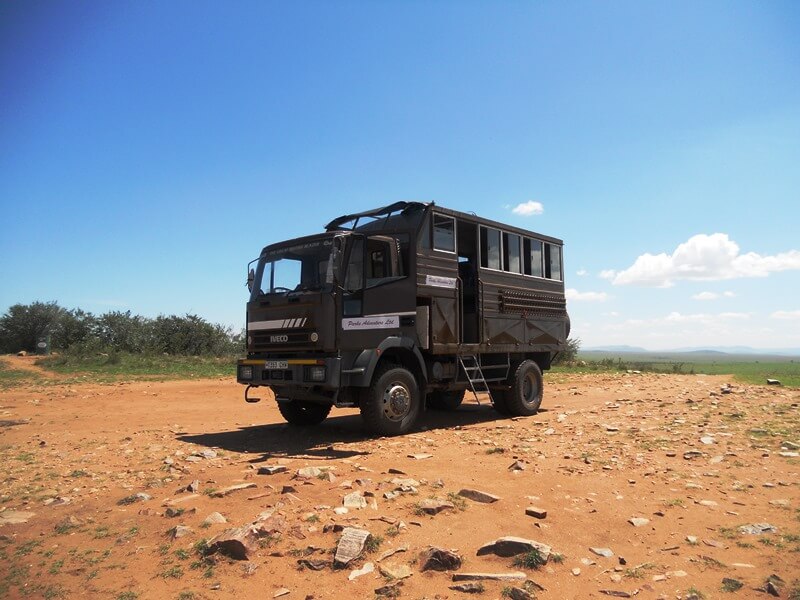
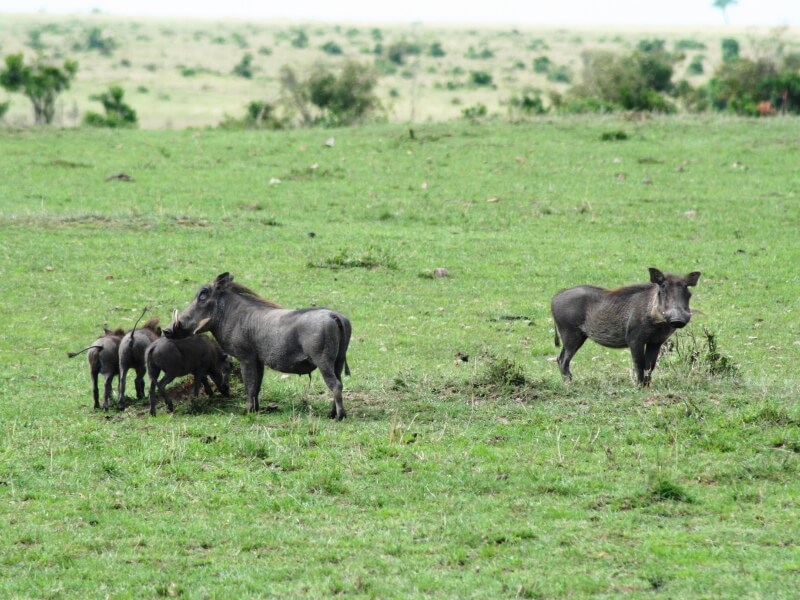


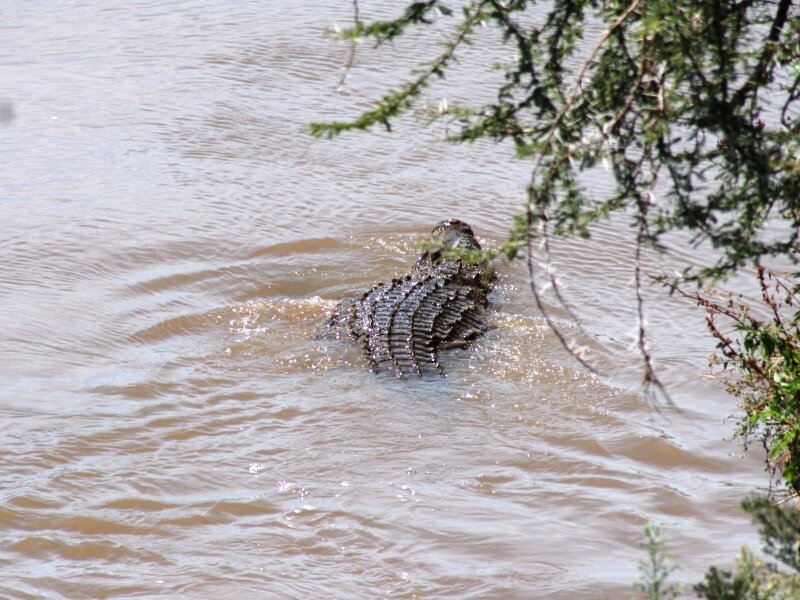
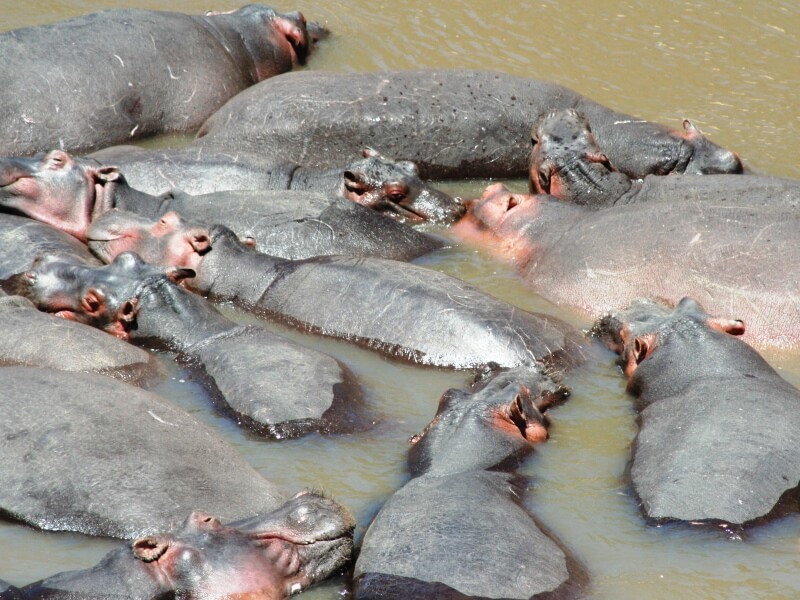
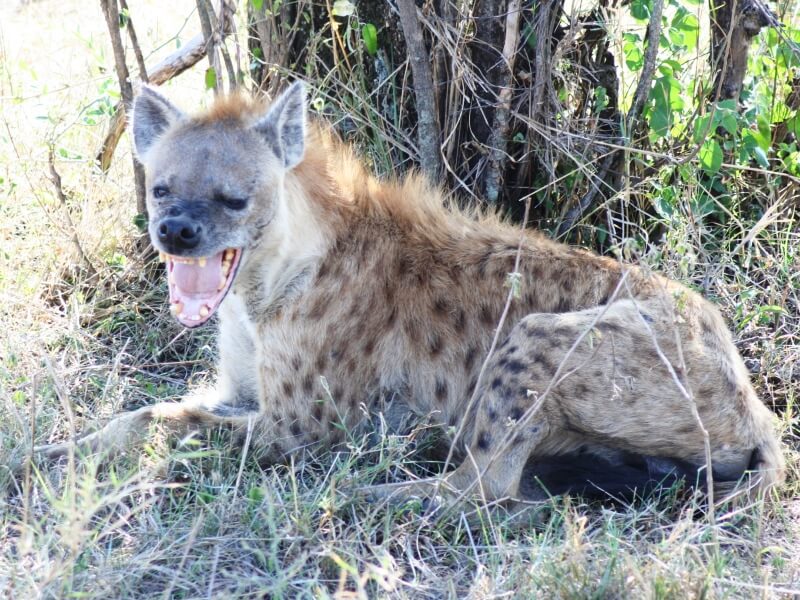
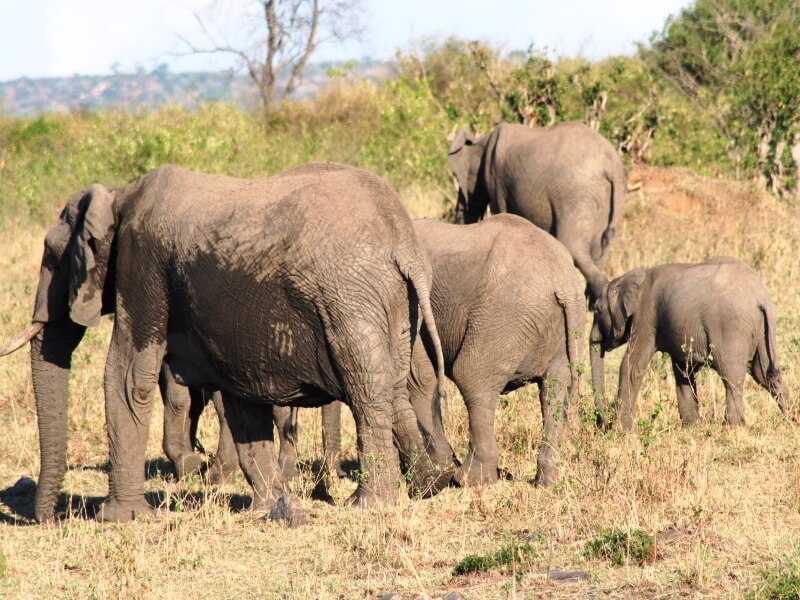
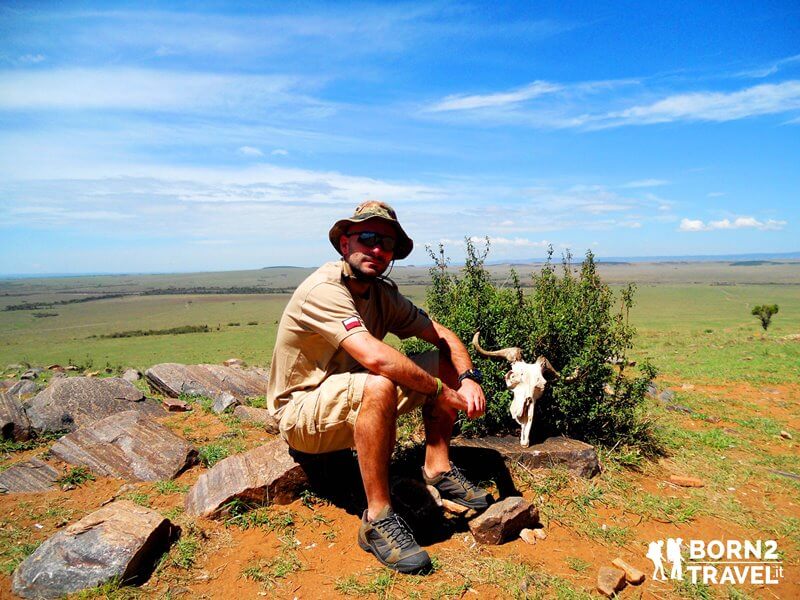
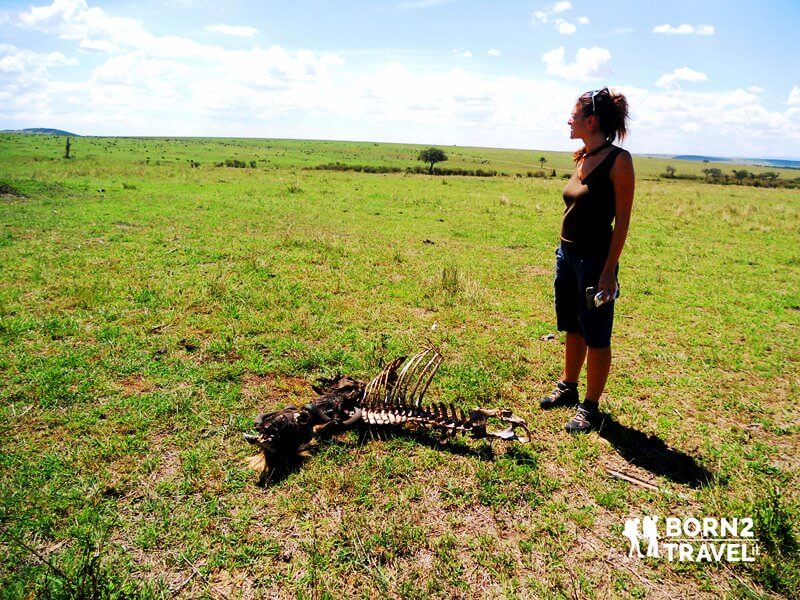
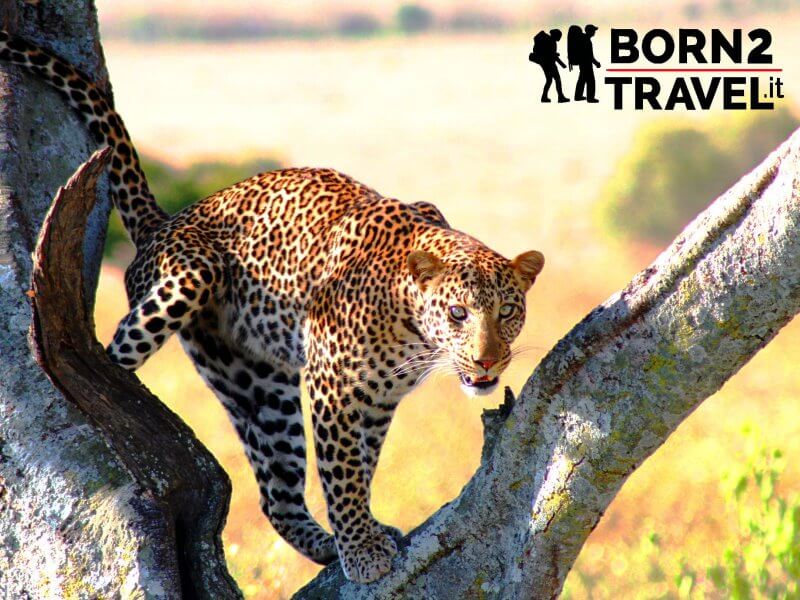
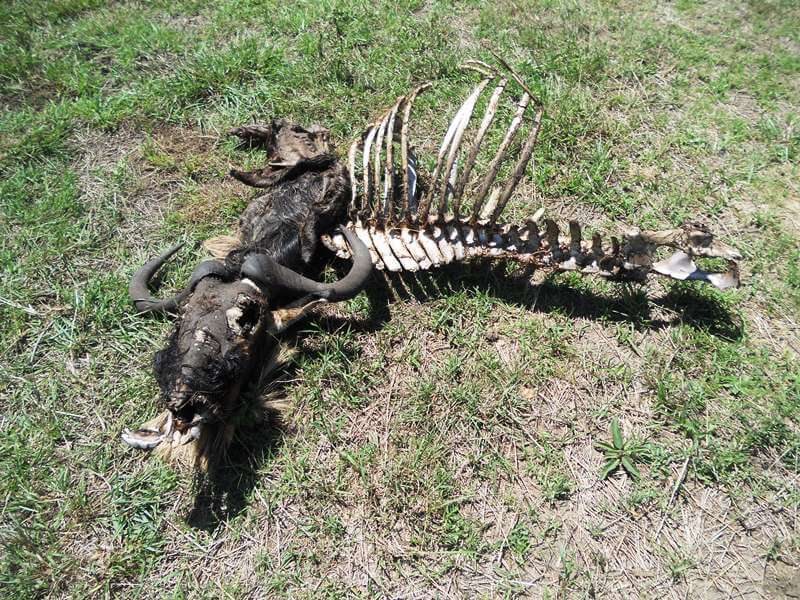

We travel almost all day to reach the town of Kisumu on Lake Victoria.
Along the way we begin to have a first perception of Kenyan daily life. We cross numerous villages of straw and mud huts; women and children lined up at the water well with large yellow bins in their hands or in perfect balance on their heads.
Intrigued, we stop to visit a couple of local markets, we wander among sellers of all merchandise, especially shoes and clothes used and imported by the consumerist West.
We arrive in Kisumu when it is already dark. It seems to be a fairly large town and is characterized by the usual abandonment of these places where the survival of its people takes precedence over urban aesthetics.
We stop at the Kisumu Beach Resort, a shabby place full of mosquitoes, after all we are right on the banks of Lake Victoria ... "but mosquitoes are not malarial" - as one of the guys who manages it tries to reassure us.
It is hard to set up the tents after 12 hours of trucks, tired, sweaty, hungry, in the dark and on a harsh and hard ground while insects of all kinds buzz around you.
Only the dinner prepared by Alì based on penne pasta with sauce and tuna can give us some energy!
A few hours of walking and we are in Busia, the last city in Kenya: border.
Here the usual disordered chaos reigns, the comings and goings of all borders.
There are those who want to accompany us by bicycle or motorbike to immigration; many offer us oddly advantageous shady currency exchanges; everything is sold and there are people from all over East Africa.
Kenyan exit stamp; discussion with a border policeman for an innocent photo of the flag; shortly after, Ugandan entry stamp while the sinuous and colored flag, photographed just before, waving welcomes us to this nation that will host us for ten days.
We wait two hours under a scorching sun for the handling of our truck's customs formalities: African times, no fear!
Once we leave, we notice that the landscape has completely changed. The red of the land of Equatorial Kenya gives way to a lush green, it often rains here!
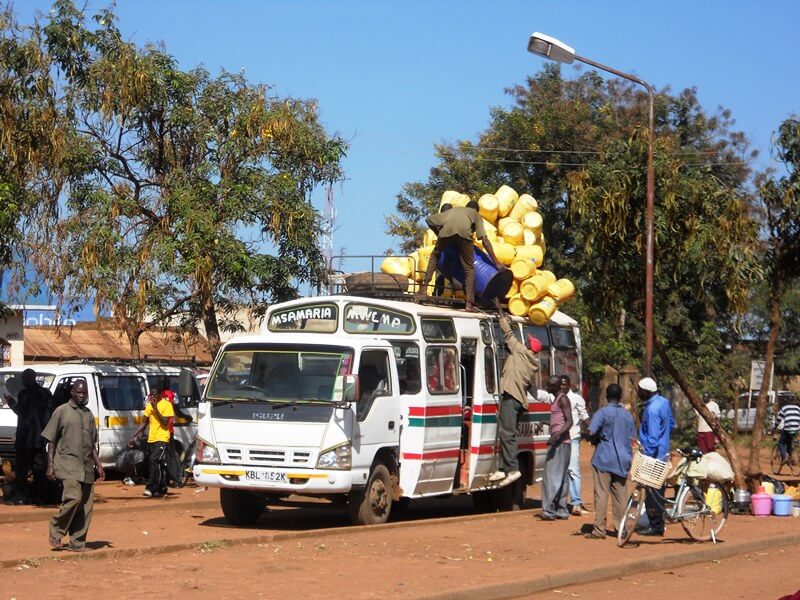
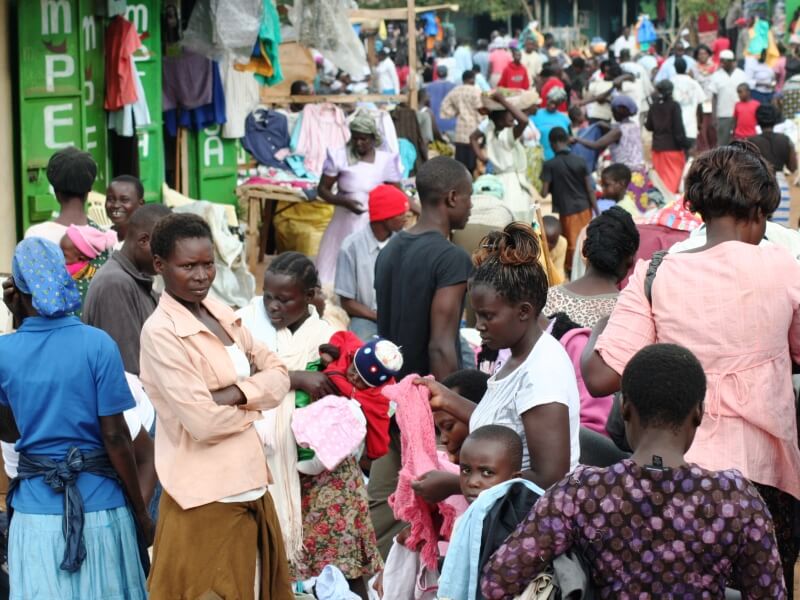


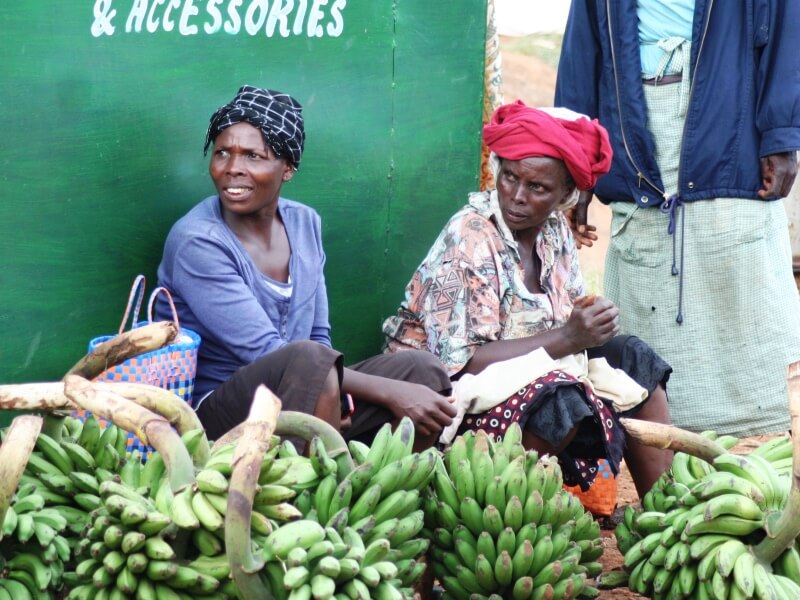
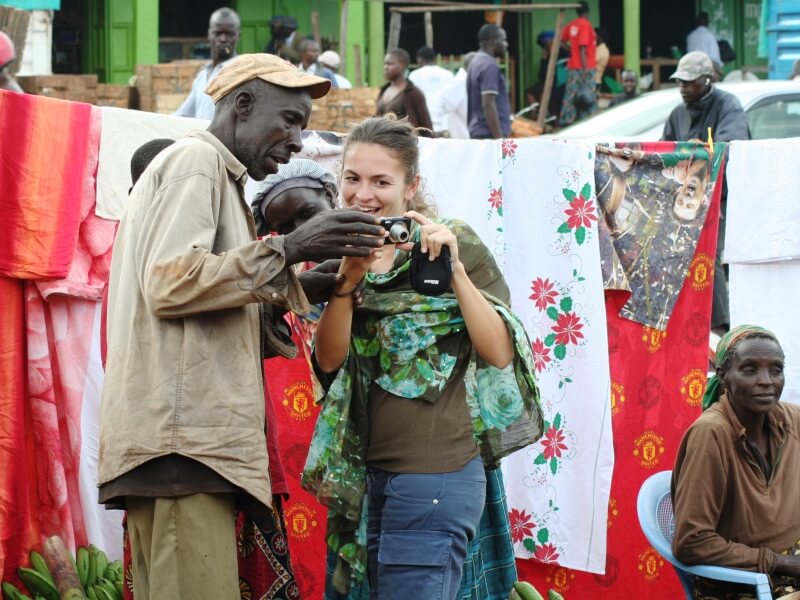
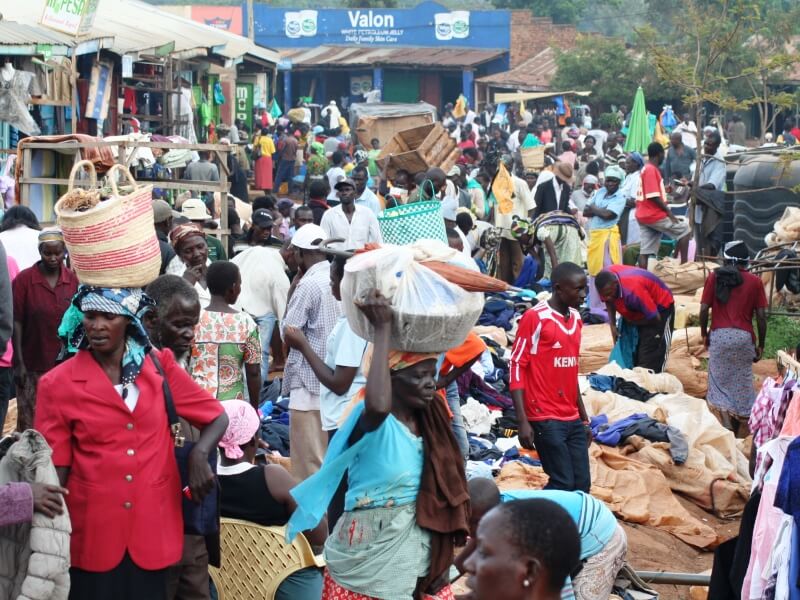
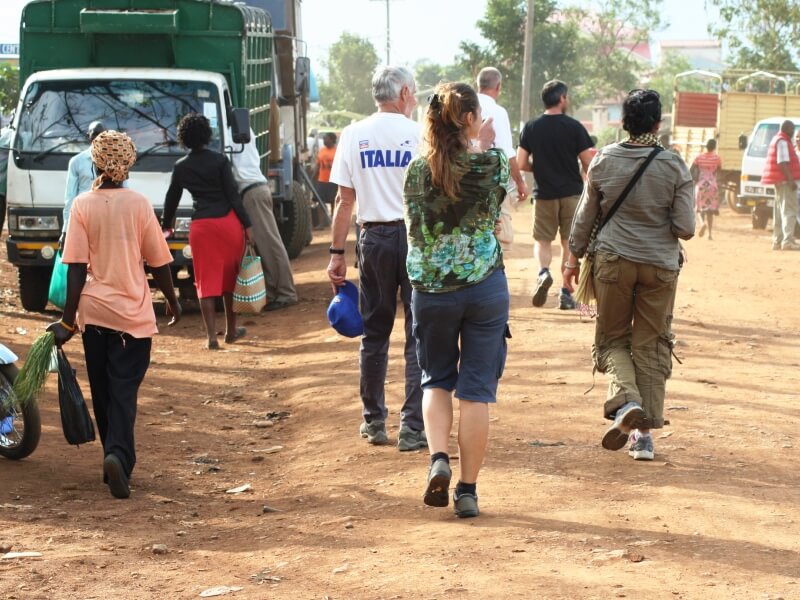
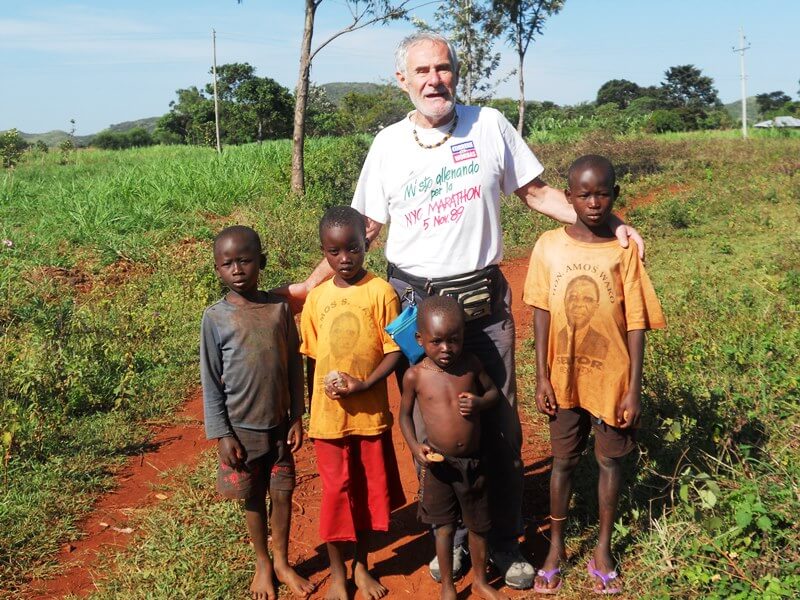

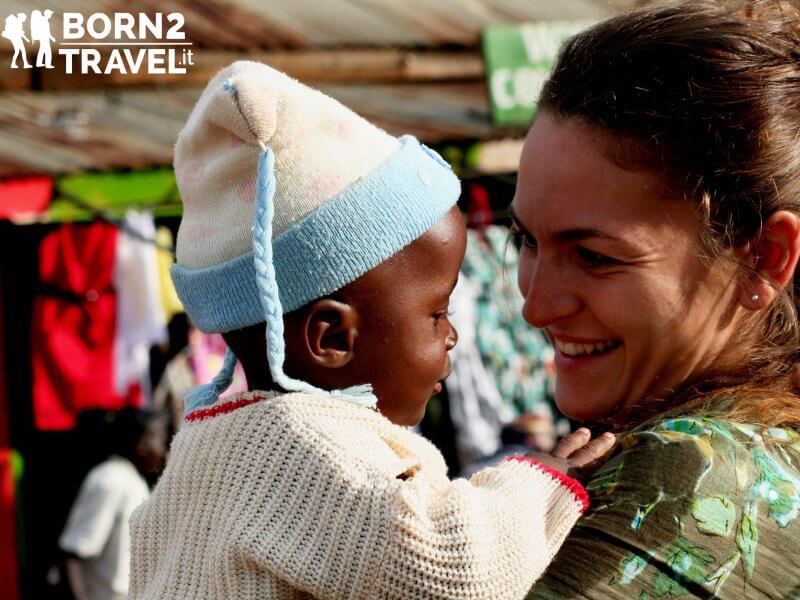
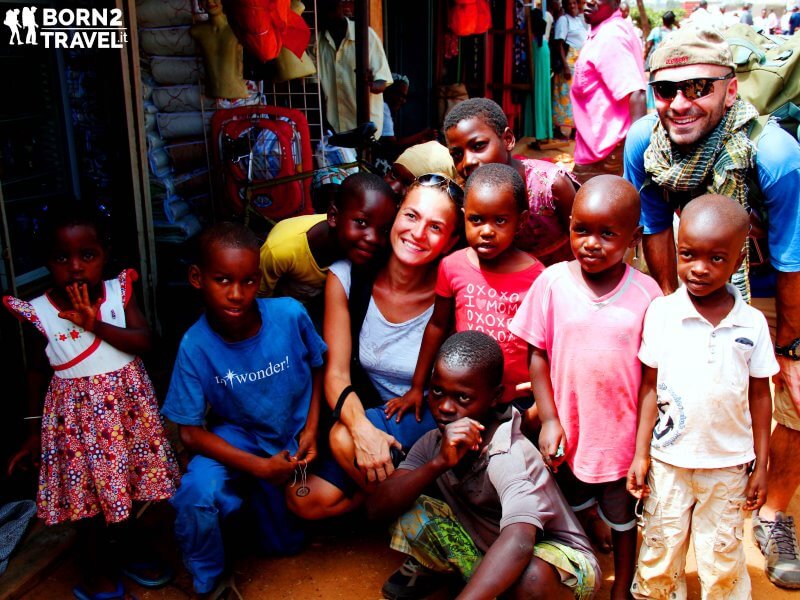
We travel all day until we reach the chaotic capital: Kampala.
Error: No feed found.
Please go to the Instagram Feed settings page to create a feed.
4 Responses
Great adventure, hopefully you get to visit Amboseli, the Kenyan Coast Malindi, Watamu, Mombasa, Diani and experience the magical beaches and the other cultures (The Mijikendas).
Just a correction on Busia, it is just one of the towns in Kenya, not the largest and not classified as a city. The cities are Nairobi, Kisumu and Mombasa.
Hi dear Star, of course, visiting the coast is on our bucket list for our future trip.
Thanks for the correction about Busia but I ddnt mean it as a city but as a big border gate
Visit kisumu, homa-bay, ruma national park and rising in nita all are in Homa-Bay county
Thank you very much for your advice